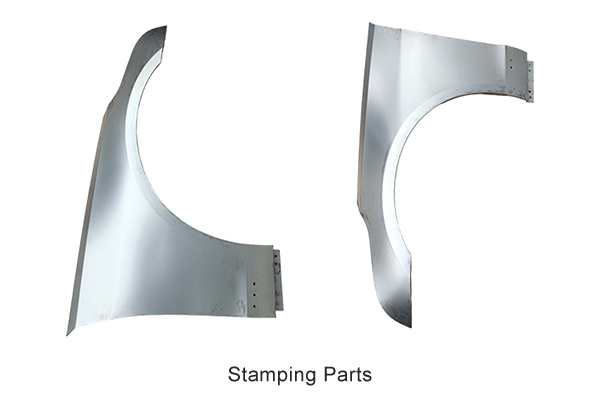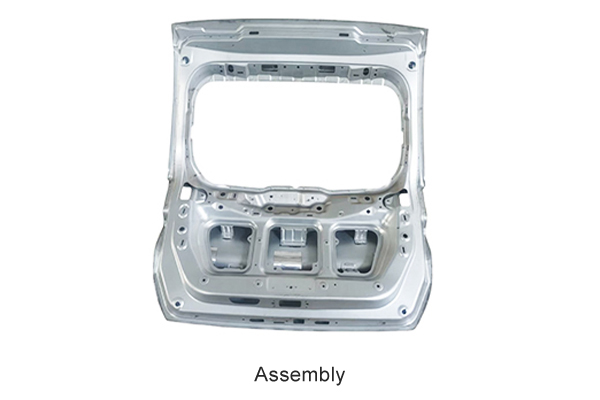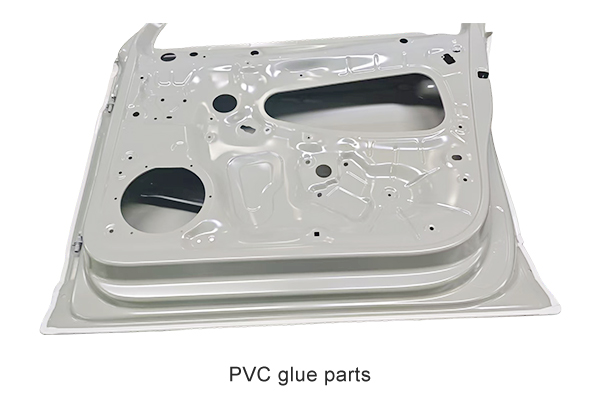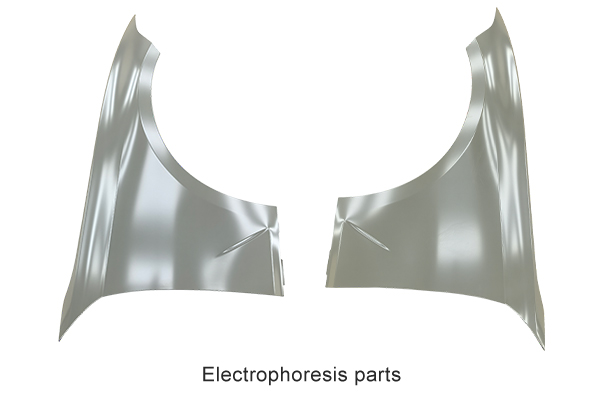Hydraulic processing of automobile sheet metal How to deal with complex curved surface modeling?
Release Time : 2025-06-12
As automobile design develops towards personalized and streamlined directions, complex curved surface modeling is becoming more and more common in body design, which puts higher requirements on hydraulic processing of automobile sheet metal. To deal with these complex curved surfaces, it is necessary to work together from mold design, processing technology, equipment performance and other aspects to break through the limitations of traditional processing and achieve the dual goals of modeling and precision.
The mold is a key tool for shaping complex curved surfaces of sheet metal, and its design must accurately fit the modeling requirements. For complex curved surfaces, designers need to use advanced 3D modeling software to accurately map and simulate the curved surfaces of the car body. By constructing a high-precision 3D model, every arc and turn of the surface is carefully presented, providing an accurate basis for mold design. In the mold manufacturing process, CNC machining technology is used to convert the design model into a high-precision mold entity. Especially for complex curved surfaces, advanced processes such as five-axis linkage machining are used to make the mold surface highly consistent with the design surface, thereby providing reliable support and constraints for sheet metal forming during hydraulic processing.
The optimization of the hydraulic processing of automobile sheet metal process is the core of conquering complex curved surfaces. Traditional hydraulic processing technology is very good at processing simple planes or regular surfaces, but it is powerless when facing complex surfaces. For this reason, new processes such as liquid filling deep drawing and hot forming need to be introduced. The liquid filling deep drawing process uses liquid medium to replace some functions of rigid molds. During the deformation of sheet metal, the liquid can apply uniform pressure according to the shape of the surface, effectively avoiding problems such as wrinkling and cracking of sheet metal during the forming process. The hot forming process is to first heat the sheet metal to a specific temperature to enhance its plasticity, and then perform hydraulic forming. The sheet metal at high temperature is easier to fit the mold surface, which can better realize complex shapes, and at the same time improve the strength and rigidity of the sheet metal.
The improvement of equipment performance provides hardware guarantee for processing complex surfaces. High-performance hydraulic equipment has more precise pressure control and displacement control capabilities. When processing complex surfaces, the equipment can adjust the pressure size and direction of action in real time according to different parts of the surface and deformation requirements. For example, in areas with large curved surfaces and high deformation requirements, the equipment automatically increases pressure to ensure that the sheet metal is fully extended; in relatively flat areas, the pressure is appropriately reduced to prevent excessive deformation. At the same time, the movement accuracy of the equipment is also crucial. The high-precision guide rails and transmission systems can ensure that the movement trajectory of the mold during the processing is accurate and correct, so that the sheet metal can be accurately formed according to the design requirements.
During the processing process, the selection and processing of sheet metal materials cannot be ignored. Sheet metals of different materials have different properties such as ductility and strength. For complex surface modeling, suitable materials need to be selected. Generally speaking, materials with good plasticity and toughness are more suitable for complex surface processing. They can be better deformed under hydraulic pressure and are not prone to fracture. In addition, pretreatment of materials can also improve the processing effect. For example, annealing can reduce the hardness of the material and improve its plasticity; lubrication of the material surface can reduce the friction between the sheet metal and the mold, making the sheet metal smoother during the deformation process, which is conducive to the forming of complex surfaces.
Real-time monitoring and adjustment during the hydraulic processing of automobile sheet metal are important links to ensure the quality of complex surfaces. The deformation process of sheet metal is monitored in real time using sensors and monitoring equipment. Sensors can collect data such as stress and strain of sheet metal during the forming process in real time and feed these data back to the control system. Once it is found that the deformation of a certain part does not meet the design requirements, the control system immediately adjusts the pressure, speed and other parameters of the hydraulic equipment to correct the processing process. At the same time, operators can also observe the forming state of sheet metal intuitively through the visual monitoring interface, find potential problems in time and take corresponding measures to ensure the processing accuracy and quality of complex curved surfaces.
Post-processing of complex curved surfaces is also critical. After the hydraulic processing is completed, there may be some minor flaws on the surface of the sheet metal, such as local unevenness and edge burrs. This requires fine processing of the sheet metal through post-processing processes such as grinding and polishing. For the grinding of complex curved surfaces, the traditional large-area grinding method cannot be used, but special grinding tools should be used according to the shape and characteristics of the curved surface for detailed local processing. The polishing process can improve the smoothness of the sheet metal surface to meet the requirements of the car's appearance. Through these post-processing, complex curved surface modeling not only meets the design standards in shape, but also meets the high requirements of automobile manufacturing in terms of surface quality.
Dealing with complex curved surface modeling in hydraulic processing of automobile sheet metal is a systematic project integrating mold design, process optimization, equipment upgrade, material selection, process monitoring and post-processing. Only by finely controlling and coordinating each link can we break through the difficulties of complex curved surface processing, provide high-quality sheet metal parts for automobile manufacturing, and help realize the innovation and development of automobile styling.








